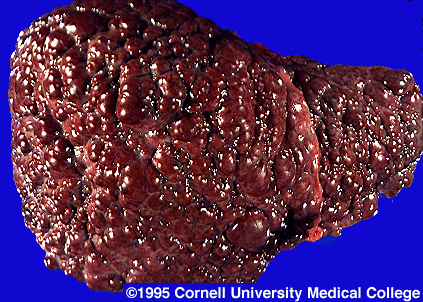Herpesviridae
http://pathmicro.med.sc.edu/virol/herpes_simplex.jpg
Above: TEM of Herpes Simplex Virus
Herpesviruses are a leading cause of human viral disease, second only to influenza and cold viruses. They are relatively large, enveloped viruses with linear dsDNA. Herpesviruses are widely distributed in nature.
Important properties
· Concentric virion with
o Inner core
o Icosahedral capsid
o Amorphous tegument
o Envelope ( glycoprotein)
· Linear dsDNA
· Three origin of replication (ORI)
http://pathmicro.med.sc.edu/mhunt/dna15.jpg
Source:
The herpesviruses are known for their ability to cause latent infections.
· In cells infected with herpesviruses, the viral dsDNA can exist as a provirus.
· Herpesviruses remain in host cells, usually neurons, for long periods and retain the ability to replicate.
· For example, a child who has recovered from chickenpox (varicella) will still have the virus in a latent form.
· Years or decades later, the virus may be reactivated as a result of stress and/or physical factors.
· This adult disease, which is very painful, is called shingles (zoster).
· 11 of more than 100 genes of the herpesvirus genome are known to be involved in latency.
Pathogenesis of Human Herpes Type 1 to 5
| Human Herpes Type | Name | Target cell Type | Disease | Latency | Transmission |
| 1 | Herpes simplex-1 (HSV-1) | Mucoepithelia | Oral herpes, encephalitis | Neuron | Close contact |
| 2 | Herpes simplex-2 (HSV-2) | Mucoepithelia | Genital and neonatal herpes, meningoencephalitis | Neuron | Close contact usually sexual |
| 3 | Varicella Zoster virus (VZV) | Mucoepithelia | Chickenpox (varicella) and Zoster (shingles) | Neuron | Contact or respiratory route |
| 4 | Epstein-Barr Virus (EBV) | B lymphocyte, epithelia | Infectious mononucleosis and Burkitt’s lymphoma; linked to Hodgkin’s disease, B cell lymphomas and to nasopharyngeal cancer. | B lymphocytes | Saliva |
| 5 | Cytomegalovirus (CMV) | Epithelia, monocytes, lymphocytes | Acute febrile illness; infections in immunosuppressed patients, leading cause of birth defects. | Monocytes, lymphocytes and possibly others | Contact, blood transfusions, transplantation, congenital |
Clinical Features
HSV-1: Typically, Herpes labialis—Cold scores; Blisters around the mouth which lasts for around 1 week or more. May also affect the eyes (keratoconjunctivitis).
http://pathmicro.med.sc.edu/virol/coldsore2.jpg
HSV-2: Genital herpes, which is characterized by blisters, burning sensation and discharge.
VZV: In varicella, fever and malaise occur. Lesions appear on the trunk and spreads to the head and extremities. This is dangerous in pregnant women and may affect the nervous system—Guillain Barre syndrome. In zoster, painful vesicles occur along the course of a sensory nerve of the head or trunk.
http://pathmicro.med.sc.edu/virol/chickenpox3.jpg
Laboratory Diagnosis
· Virus culture
· Enzyme-linked immunosorbent assays (ELISAs)
· Blood test
· Tzanck smear
· PCR assay
Epidemiology
HSV-1: Almost 100% of the adult population due to kissing and close proximity.
HSV-2: Up to 20% of the U.S. population due to sexual contact.
VZV: Varicella is a highly contagious disease of childhood; more than 90% of people in the U.S. have antibody by age 10 years. Varicella occurs worldwide.
EBV: Almost 100% of the adult population due to kissing and close proximity.
Control
HSV-1, HSV-2 and EBV: Avoid kissing to prevent contact with vesicular lesions or ulcers, and refrain from risky sexual behaviour. For the Herpes Simplex Viruses, caesarean section is recommended for women who are at term and who have genital lesions or positive viral cultures.
VZV: Vaccination with live, attenuated VZV (e.g. Varivax), and avoiding infected people.










